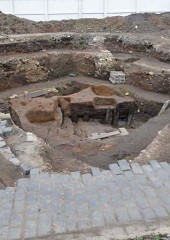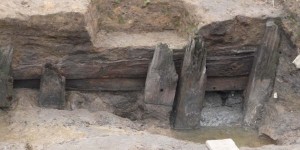The department has recently acquired a software package named PI3000. This is used to create 3D models from normal photographs.
Using PI3000
A calibrated camera is needed (any camera can be calibrated) although it is important you can lock the focus on it because the software needs the focus to be the same for all photographs or it wont be able to create the model.
The photographs can now be taken and need to be stereo images. It is best to start to the left of the object and then move right by roughly one third the distance between the camera and the object for each photograph.
Once you have the photographs, they are loaded, along with the camera's calibration file, into PI3000. The first two images to work with are chosen and matching points, such as corners, are found on both images. When there are enough accurate points the software will be able to create the stereo pair.
The next stage is to select the area on the images of which you wish to create your model. This is done by drawing a polyline enclosing the area. Additional polylines may be drawn to indicate break lines. The final step is creating the model itself. All that needs to be done here is to tell the software how fine you want the detail. This may take some time, depending on the detail and complexity of your model. Once it has finished though you will be able to view the completed model.
Uses of PI3000
One example of a use of PI3000 is my dissertation, on the subject of the shrines of St. William.
Before the reformation York Minster had two shrines dedicates to St. William of York, a controversial 12th century archbishop. One, the principal shrine, stood at the east end of the minster while the other, the tomb shrine, stood over his original burial place.
At the reformation both shrines were taken from the minster and buried in Precentors Court. Several fragments of both shrines have thus survived and are now in the possession of the Yorkshire museum, though not currently on display to the general public.
As part of my dissertation I have been using PI3000 to create models of the shrine fragments. I hope to use these to create a reconstruction of both shrines.
Although I have used PI3000 to create models of highly detailed, sculpted stone fragments, PI3000 could also be used to create models of entire building faces and therefore has the potential to be a valuable asset to the department.





